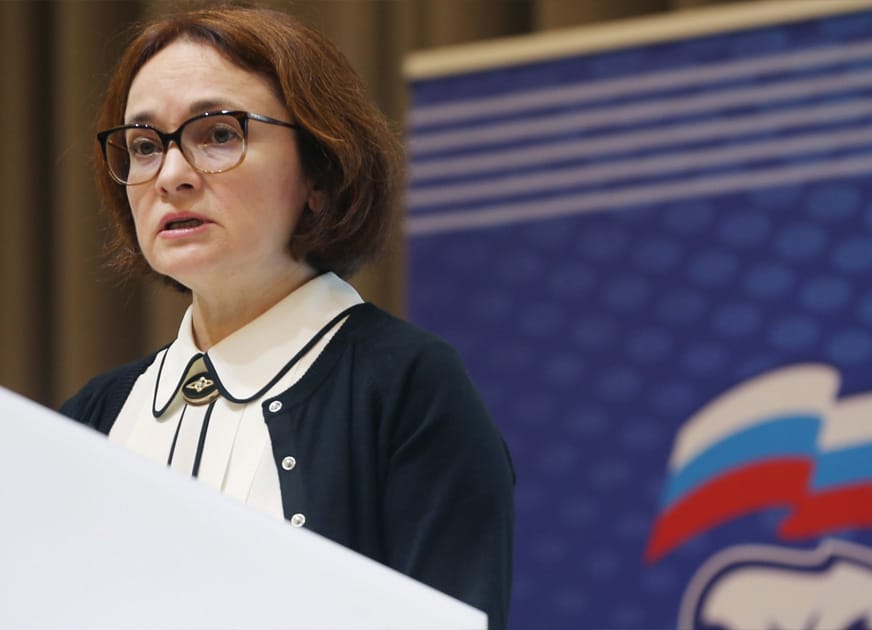News by
Financial Times on
Today, after an unprecedented three-year purge of the dark corners of Russian finance, that number is down to “no more than about 10”, Ms Nabiullina says. And she is only just getting started.
“What pleases us is that people are realising that punishment is inevitable for those who don’t respect the law,” the central banker, praised recently by President Vladimir Putinfor her “energetic efforts [against] banditry”, tells the FT in an interview in her neoclassical Moscow headquarters, across the street from the Bolshoi Theatre. “Unscrupulous bankers are being punished and going to prison, and it’s very important to avoid that happening again.”
Outwardly, little about the mild-mannered 52 year old marks her out as a crusader against financial malpractice. Since taking over, she has shut down 276 banks and put a further 28 through the regulator’s financial rehabilitation programme.
An ethnic Tatar and opera lover who can recite French poetry from memory, she served as economy minister before Mr Putin chose her as a compromise candidate to lead the central bank in 2013.
Soon afterwards, Russia plunged into two years of recession caused by the drop in oil prices and western sanctions over the Ukraine crisis, putting Ms Nabiullina under heavy pressure to abandon her orthodox approach. Yet while many worldwide central bankers are increasingly turning to unconventional measures to kick-start growth, Ms Nabiullina stuck to her guns in steadfast pursuit of lower inflation.
Many now say she helped keep Russia’s economy away from the precipice. “She is the economist Putin trusts the most,” says a senior Russian banker.
Faced with criticism from bankers angry with tougher regulation and high interest rates, Ms Nabiullina’s unassuming demeanour and her tortoise-shell glasses mask a steely insistence on strict fiscal discipline.
“The banking system has fully returned to profitability. This is at about the same level as it was before the various crises that began towards the end of 2014,” she says. “And we didn’t do it by closing our eyes to certain problems, we are toughening up our oversight.”
Ms Nabiullina shook up the central bank’s personnel this month in a move she says will allow the regulator to identify problems before they happen and prevent banks from cooking the books in the face of liquidity crises.
Her policies have been all the remarkable in the face of Russia’s worst economic crisissince the country defaulted in 1998. Oil prices, the key source of Russia’s rapid growth in Mr Putin’s first decade in power, began to plummet a year after she took over, prompting a currency crisis in December 2014 that nearly saw a run on the banks.
President Vladimir Putin and central bank governor Elvira Nabiullina in discussion at the Kremlin
Over a few stop-start weeks, Ms Nabiullina spent $12bn in reserves in a failed attempt to prop up the rouble. After it hit historical lows nonetheless, she shocked markets twice in a matter of days: firstly by nearly doubling interest rates to 17.5 per cent, then by abruptly switching to a free float of the currency weeks before she had originally intended. Now, however, her approach is widely seen as having helped Russia, which gets half its budget revenues from oil and gas, mitigate its fall in income and maintain a relatively small deficit of 3 per cent.
“We spent some reserves to calm the market’s psychological expectations. When we understood that the trend with oil prices was for the long term, we switched to a free float,” she says.
Ms Nabiullina says weathering that storm has taught her key lessons in crisis management. “The most important thing is not to be dogmatic, but flexible and consistent. There’s a lot of pressure and criticism in a crisis, but you can’t miss the wood for the trees.”
Mr Putin has backed Ms Nabiullina to pursue a goal many in Moscow consider quixotic: lowering inflation to 4 per cent by the end of next year. With rates still “moderately tight” at 10 per cent, inflation has already fallen from 17 per cent to 6.4 in under two years.
The central bank governor says her target is key to win public trust in monetary policy. “We’re not maintaining higher rates because we like doing it, but because we are determined to lower inflation. Low inflation is a good thing for the Russian economy,” she says. Nonetheless, she admits, “We haven’t convinced everyone yet.”
She shrugs off the notion that lower rates would have helped Russia return to growth any faster, saying that her tough prescriptions are the only viable approach tough economic times — even if they may not be enough on their own.
“The factors that let the economy grow in the past have changed,” she says. “There is a need for structural changes that will help productivity grow, irrespective of what monetary policy is.”
Comments
Add comment